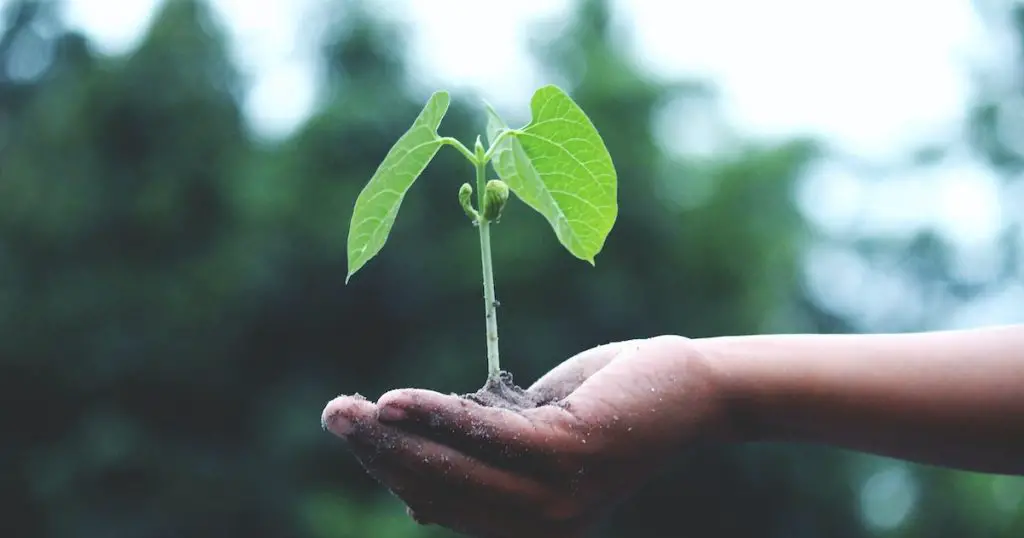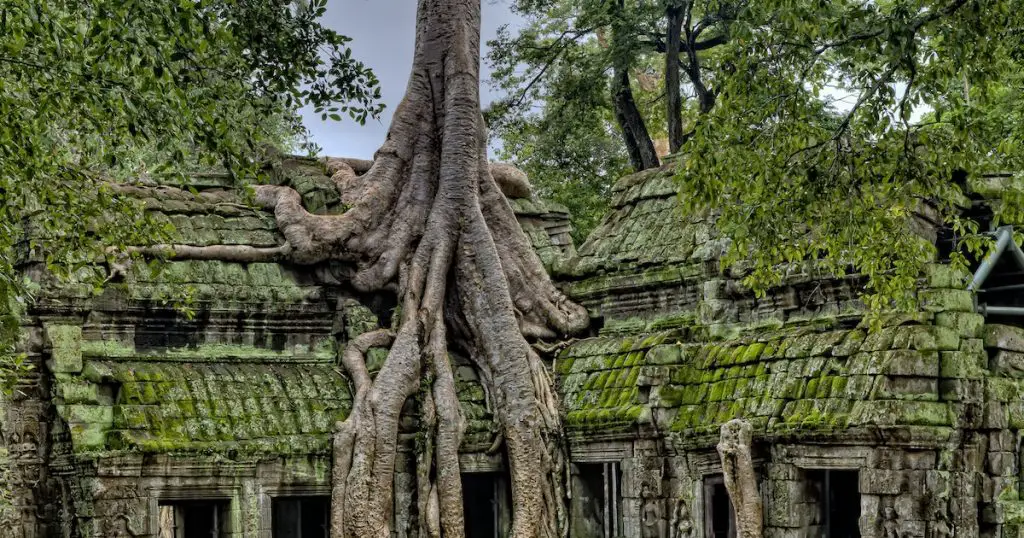The Prescott National Forest, spanning over a million acres in central Arizona, is a treasure trove of natural wonders. Within this expanse, you’ll encounter diverse terrains—from vast grasslands to dense pine forests. But the real charm? The myriad of plants that call this place home.

Plant identification along Prescott National Forest trails offers an intimate experience, providing a glimpse into the heart of this magnificent ecosystem.
The Diverse Ecosystem of Prescott National Forest
Prescott National Forest is not just a collection of trees—it’s a living mosaic of habitats. This diversity is shaped by factors such as altitude, soil type, and available moisture. These varied environments, in turn, support a multitude of plant species.
For those interested, the U.S. Forest Service provides an in-depth guide to the different habitats within the forest. This knowledge equips adventurers to better appreciate the plants they encounter, understanding their role in the grand scheme of the ecosystem.
The Basics of Plant Identification
As any seasoned botanist would say, plant identification is a rewarding pursuit. With a bit of knowledge and the right tools, even the untrained eye can learn to discern the myriad of species lining the trails.
When starting out, a reliable field guide is invaluable. Websites like PlantNet offer interactive tools to help you identify plants based on images. Moreover, don’t forget the power of observation. Noting the shape, size, and texture of leaves, or the color and pattern of flowers, can offer significant clues.
Trees of Prescott National Forest
The towering trees of Prescott National Forest are both majestic and vital, playing crucial roles in the ecosystem.
The Ponderosa Pine is arguably the most iconic of them all. These giants, with their unique bark that smells faintly of vanilla, are a haven for countless wildlife species. They not only provide shade but also anchor the soil, preventing erosion.
On the other hand, the Alligator Juniper, with its bark resembling alligator skin, is equally captivating. These trees are resilient, often thriving in rocky terrains where others can’t. Their berries, by the way, have been a food source for native tribes for millennia.
Flowering Plants Along the Trails
Bursts of color dot the landscape, thanks to the flowering plants that thrive in the forest. Each has a tale to tell, a role to play.
The Desert Marigold, with its radiant golden flowers, is a beacon in arid regions. These sun-loving beauties attract pollinators, ensuring the continued vibrancy of the ecosystem.

Then there’s the Blue Paloverde. A tree rather than a shrub, its green bark is a mechanism to photosynthesize even when it sheds its leaves in drought. Its brilliant yellow flowers are not just a sight to behold but also a significant nectar source for bees.
Cacti and Succulents: Thorns and Beauty
No journey through Prescott’s trails is complete without admiring the cacti and succulents. These hardy plants have adapted ingeniously to thrive in challenging conditions.
The Prickly Pear stands out, not just for its thorns, but for its delightful fruits. These “pears” are juicy and sweet, a treat in the arid landscape.
Then, there’s the majestic Agave, known popularly as the century plant. Its towering flower stalk is a spectacle, albeit a once-in-a-lifetime one, as the plant dies after flowering. But don’t let that make you somber. Its offspring, little pups, soon take over, continuing the cycle of life.
Ferns and Mosses: The Forest’s Understory
Ferns and mosses may not have the flamboyance of blooming flowers, but their charm lies in their subtlety.
The Bracken Fern with its intricate fronds creates a lace-like underbrush, offering shelter to countless insects and small animals.
Pincushion Moss, on the other hand, provides a velvety green carpet in damp spots of the forest. Touch it, and you’ll realize nature has its own version of a plush rug.
Edible Plants: Nature’s Pantry Along the Trails
Nature is generous, and the forest is replete with edible offerings. But a word of caution: always be certain before consuming any wild plant.
- Manzanita Berries: These red, apple-like fruits are not just visually appealing but are also packed with nutrients.
- Wild Mint: Stumble upon these, and your olfactory senses are in for a treat. These leaves add a refreshing touch to drinks and salads.
- Yucca Blossoms: These creamy-white flowers are a surprising culinary delight. Crisp and mildly sweet, they’re a forager’s delight.
Medicinal Plants of the Forest
Nature’s pharmacy is well-stocked in the Prescott National Forest. Indigenous tribes have, for centuries, harnessed the healing powers of these plants.
Yarrow is a marvel, known for its ability to staunch bleeding. Crushed leaves, when applied to wounds, can provide relief.
Mullein, with its tall yellow flower spikes, has been a go-to remedy for respiratory issues. Its leaves, when brewed as a tea, are said to provide relief from coughs and bronchial congestion.
Dangerous Plants: Cautionary Tales
But not all that glitters is gold. Some plants, while beautiful, can be perilous.
The notorious Poison Ivy lurks in the forest, with its “leaves of three.” Brushing against it can lead to itchy, blistering rashes.

Equally deceptive is the Poodle-dog Bush. Its purple blossoms might beckon you, but its touch can result in painful irritations, quite similar to poison ivy.
Conservation and Preservation of Forest Flora
The beauty and biodiversity of the Prescott National Forest is a testament to the years of conservation efforts that have gone into its preservation. Every plant, from the towering Ponderosa Pines to the smallest moss, plays an integral role in the forest ecosystem.
While agencies work hard to maintain the balance, visitors too play a critical role. Staying on marked trails, avoiding littering, and practicing responsible foraging and plant collection are just a few ways you can help. For those who want to be actively involved, volunteering opportunities are abundant. Whether it’s tree planting or educational outreach, every hand helps.
Guided Tours and Educational Programs
The magic of the forest often lies in the details. While wandering and exploring can be a thrill, there’s immense value in guided tours. Knowledgeable guides can spotlight unique plants you might overlook, weaving tales of ecology, history, and folklore that bring the forest to life.

And for the younger crowd? The forest offers programs aimed at budding botanists and nature lovers. Through hands-on experiences and immersive activities, they foster a deep-rooted appreciation for the environment.
Frequently Asked Questions: Plant identification along Prescott National Forest trails
What is the best time of year for plant identification in the forest?
Spring and early summer are ideal, as most plants are in full bloom.
How can I report a rare or potentially endangered plant sighting?
You can contact the U.S. Forest Service or use platforms like iNaturalist.
Are there apps or guides specifically for Prescott National Forest plants?
Yes, the official website offers guides, and apps like PlantNet can be tailored for regional identification.
Are there any areas restricted for plant collection or foraging?
Yes, many areas within the forest are protected, and collecting plants, seeds, or fruits without permission can be illegal. Always consult with park officials or check guidelines on the forest’s official website before collecting any plant material.
Conclusion
The Prescott National Forest is a verdant tapestry of plants, each thread weaving its own tale. Plant identification along its trails is more than just a hobby; it’s a journey into the heart of nature. As we tread its paths, it’s our responsibility to tread lightly, ensuring that the wonders of the forest endure for generations to come.
Whether you’re a seasoned botanist or a casual hiker, every visit offers lessons, surprises, and memories. So, on your next trail, take a moment to truly see the plants around you. In their leaves, flowers, and thorns, there’s a story waiting to be discovered.



Leave a Comment
You must be logged in to post a comment.